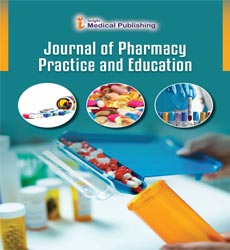Medical Services Performed on an Outpatient Basis, Without Admission to a Hospital or Other Facility
Faisa Alzunni*
Department of Pharmacy, University of Arizona, Tucson, Arizona, USA
- *Corresponding Author:
- Faisa Alzunni
Department of Pharmacy
University of Arizona
Tucson, Arizona
USA
E-mail: alfaisa@partners.org
Received Date: March 05, 2021; Accepted Date: March 22, 2021; Published Date: March 29, 2021
Citation: Alzunni F (2021) Medical Services Performed on an Outpatient Basis, Without Admission to a Hospital or Other Facility. J Pharma Prac Edu Vol.4 No.2:e041.
Description
Ambulatory care sensitive conditions (ACSC) are health conditions where appropriate ambulatory care prevents or reduces the necessity for hospital admission (or inpatient care), like diabetes or chronic obstructive pulmonary disease. Many medical investigations and coverings for acute and chronic illnesses and preventive health care will be performed on an ambulatory basis, including minor surgical and medical procedures, most forms of dental services, dermatology services, and plenty of kinds of diagnostic procedures (e.g. blood tests, X-rays, endoscopy and biopsy procedures of superficial organs).
In US, the Urgent Care Association of America (UCAOA) estimates that over 15,000 urgent care centers deliver urgent care services. These centers are designed to gauge and treat conditions that don't seem to be severe enough to want treatment in a very hospital emergency department but still require treatment beyond normal physician office hours or before a physician appointment is offered. In Russia and other countries of the previous country, Feldsher health stations are the most sites for ambulatory care in rural areas. Hospital emergency departments: Some visits to emergency departments end in hospital admission, so these would be considered medical specialty visits instead of ambulatory care. Most visits to hospital emergency departments, however, don't require hospital admission.
Ambulatory medical devices are those who are mobile which a patient can wear or use on an outpatient basis or reception. An example is ambulatory pressure level monitoring. A patient wears a conveyable pressure cuff for twenty-four hours while he goes about his usual activities. The results are synced to a computer for analysis of the info. This offers doctors have a transparent picture of how his force per unit area changes throughout a standard day. With continuous ambulatory peritoneal dialysis, someone performs dialysis on themselves some times every day instead of visiting a dialysis center. They are doing not walk around while they're doing it, but don't seem to be confined to a clinic or hospital setting, either.
Ambulatory care sensitive conditions (ACSC) are illnesses or health conditions where appropriate ambulatory care prevents or reduces the necessity for hospital admission. Appropriate take care of an ACSC can include one or more planned revisits to settings of ambulatory look after follow-up, like when a patient is continuously monitored or otherwise advised to return when (or if) symptoms appear or reappear. Hospitalization for an ambulatory care sensitive condition is taken into account to be a measure of access to appropriate primary health care, including preventive and disease management services. While not all admissions for these conditions are avoidable, appropriate ambulatory care could help prevent their onset, control an acute episode, or manage a chronic disease or condition. One potential complication of ambulatory care/outpatient care is that the increased risk for missed outpatient appointments and medical follow-ups. Missed appointments are common worldwide and are costly for health care systems. As an example, missed outpatient appointments are estimated to cost the National Health Service various pounds annually. Missed appointments also cause scheduling problems in clinics.
Open Access Journals
- Aquaculture & Veterinary Science
- Chemistry & Chemical Sciences
- Clinical Sciences
- Engineering
- General Science
- Genetics & Molecular Biology
- Health Care & Nursing
- Immunology & Microbiology
- Materials Science
- Mathematics & Physics
- Medical Sciences
- Neurology & Psychiatry
- Oncology & Cancer Science
- Pharmaceutical Sciences
